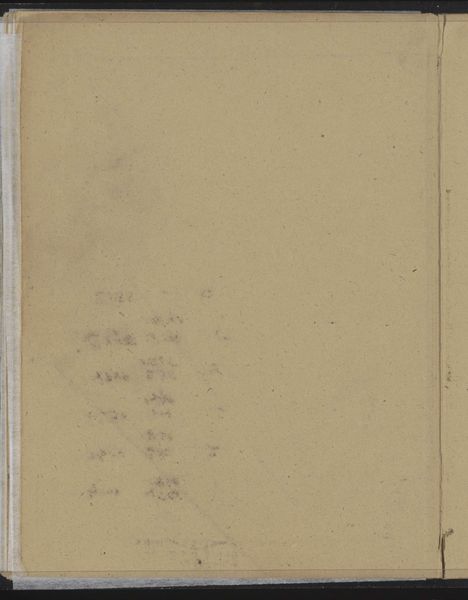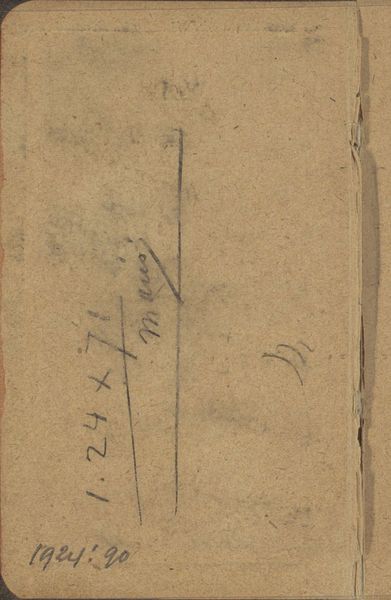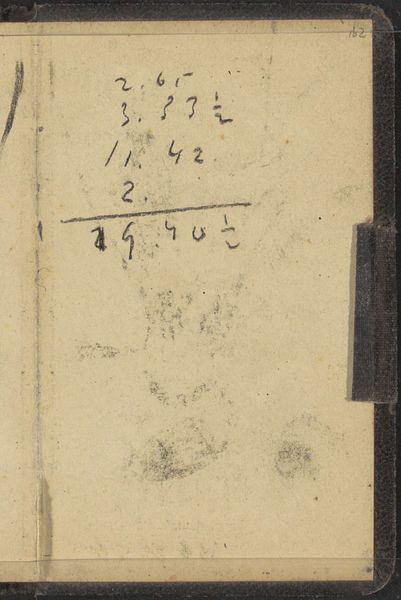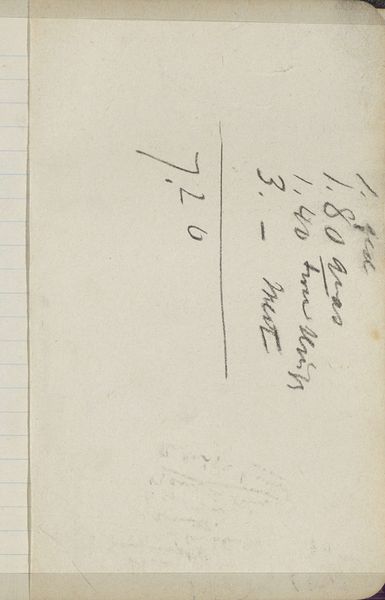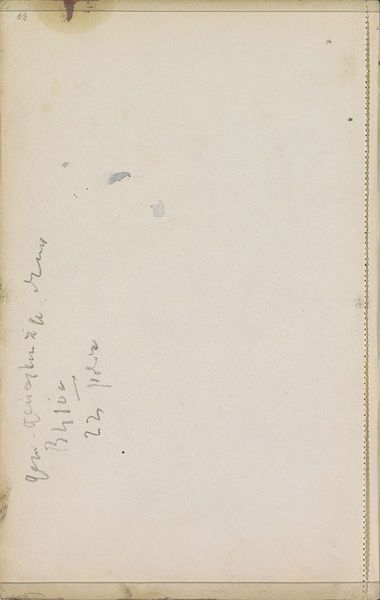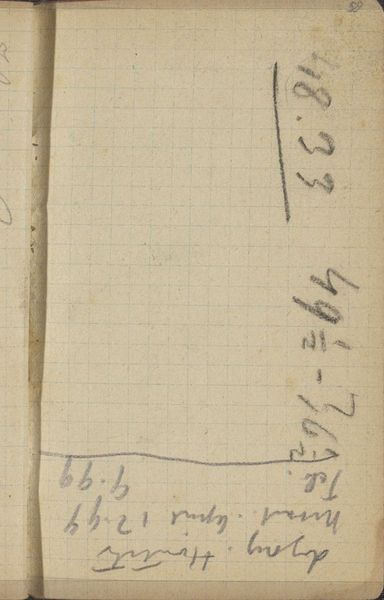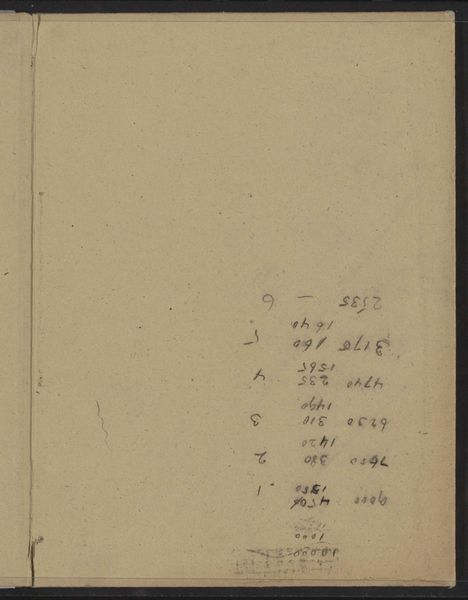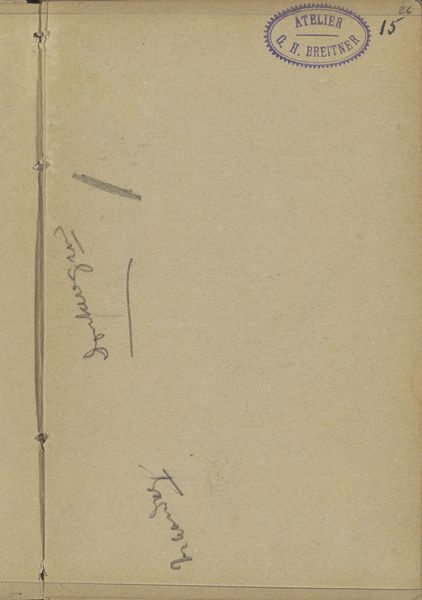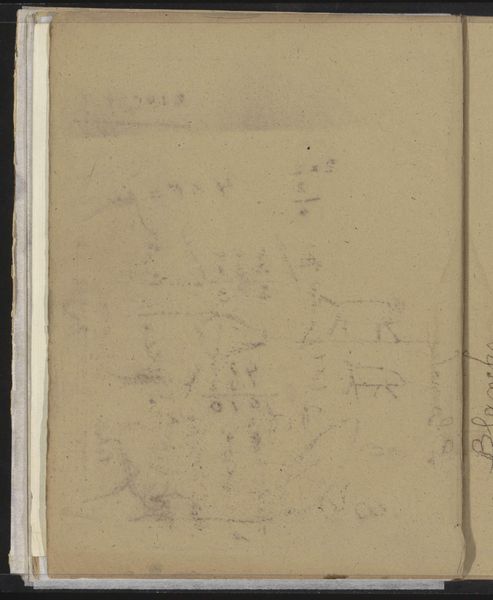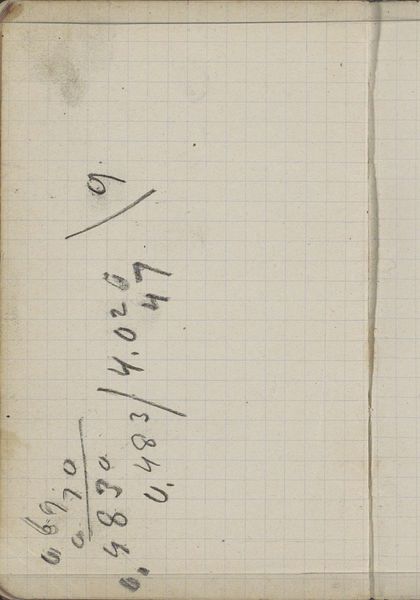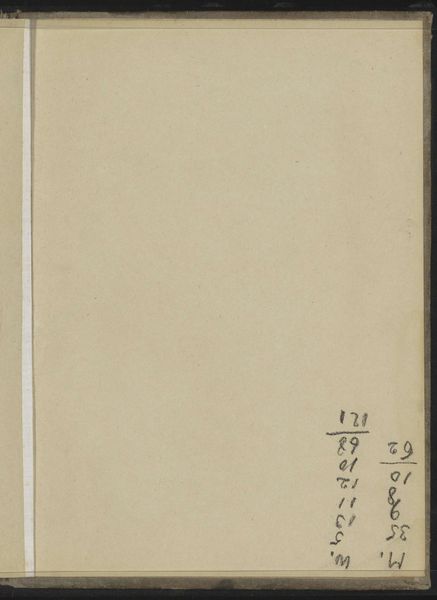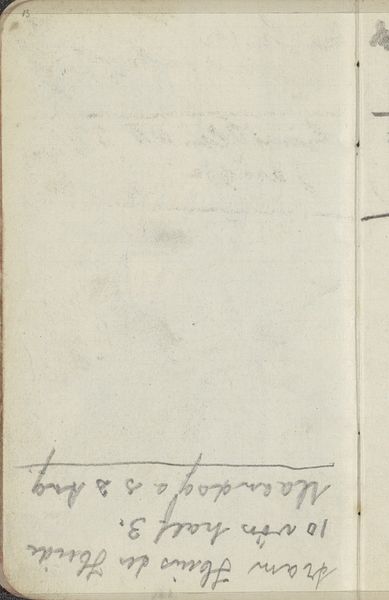
drawing, paper, ink, graphite
#
portrait
#
drawing
#
aged paper
#
hand-lettering
#
hand drawn type
#
hand lettering
#
paper
#
personal sketchbook
#
ink
#
hand-drawn typeface
#
fading type
#
geometric
#
abstraction
#
line
#
graphite
#
sketchbook drawing
#
sketchbook art
#
modernism
#
small lettering
Copyright: Rijks Museum: Open Domain
Editor: This is "Annotaties," made by George Hendrik Breitner in 1893. It looks like ink and graphite on paper, held at the Rijksmuseum. At first glance, it just seems like a page from a sketchbook, with some handwritten numbers and basic geometric drawings, kind of faded with age. What do you see in this piece? Curator: This work isn’t just a simple sketch; it's a direct glimpse into Breitner's process, reflecting a broader shift in artistic focus towards documenting lived experience. Think about the context of the late 19th century. Industrialization, urbanization – massive social changes were happening. How might those changes be reflected even in something as seemingly simple as numeric calculations and informal hand lettering? Editor: So it’s less about the numbers themselves and more about the act of recording? Curator: Exactly! It challenges traditional notions of high art. Why depict grand historical scenes when you can capture the raw data, the intimate details of everyday life? Consider also the accessibility of this medium. Paper and ink democratize the artistic process, removing it from the exclusive realm of oils and canvas, creating space for different perspectives. Does this shift your perspective at all? Editor: Definitely. I hadn't thought about how the materials themselves could be a statement. It's like Breitner is saying, "Art can be found even in the mundane." Curator: Precisely. And who gets to decide what's mundane? Breitner is challenging the established hierarchies, pushing us to consider whose stories get told and how. What do you make of the placement of this "everyday art" being held at the Rijksmuseum today? Editor: It shows how perceptions of art evolve over time and how radical shifts can, with time, change accepted ideas about artistic traditions. I initially saw a faded page of basic drawings. Now, it has a political nuance that encourages conversation. Curator: Yes, precisely that dialogue and critical reflection, extending to class, race, and gender, that ultimately creates lasting change in cultural values.
Comments
No comments
Be the first to comment and join the conversation on the ultimate creative platform.

